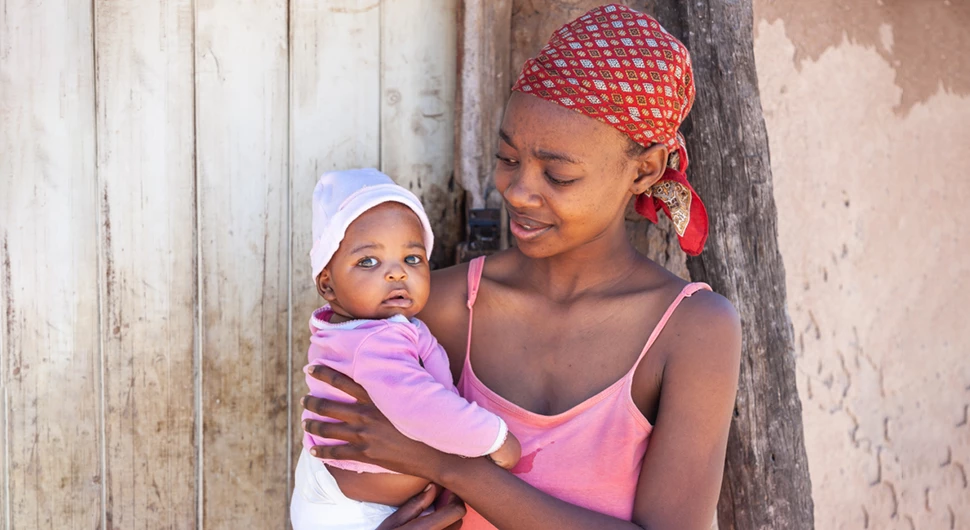
This blog is based on new mortality estimates and a report released today by the United Nations Inter-agency Group for Child Mortality Estimation (UN IGME).
There have been dramatic reductions in child and youth mortality over the last 29 years. Globally, under-five mortality has dropped by 59% since 1990—from 93 deaths per 1,000 live births then to 38 deaths in 2019. Mortality among 5-14-year-olds declined by 54% from 15 deaths per 1,000 to 7 deaths, and among 15-24-year-olds by 34% from 17 deaths per 1,000 to 11 deaths.
However, the global burden of child and youth deaths remains immense. 7.4 million children, adolescents, and youths died in 2019 alone, mostly of preventable or treatable causes, equivalent to more than 20,000 deaths per day. 70% or 5.2 million of them were children under five years old.
Among children, the risk of dying was highest in the neonatal period (the first 28 days of life). Nearly half (47%) of the deaths of children under five in 2019 were such neonatal deaths. Because the rate of decline for neonatal mortality has been slower than that for under-five mortality, deaths have been increasingly concentrated in the neonatal period. The share of neonatal deaths among all under-five deaths increased from 40% in 1990 to 47% in 2019, as the global under-five deaths declined from 12.5 million in 1990 to 5.2 million in 2019.
Reductions in neonatal mortality will require greater investment in building stronger health systems and improving coverage and quality of care in the antenatal period. It will also require care at birth and in the first week of life to save maternal and newborn lives.
Sub-Saharan Africa continues to suffer the highest under-five mortality rate in the world (76 deaths per 1,000 live births) followed by South Asia (40 deaths per 1,000 live births). One in 13 children in Sub-Saharan Africa and one in 25 in South Asia died before their fifth birthday.
The chance of survival depends highly on where children are born. By country, Nigeria has the highest under-five mortality rate at 117 deaths per 1,000 live births (1 in 9 children died).
Newborn girls have a biological advantage in survival compared to newborn boys and this advantage continues throughout life. On average, boys have a higher probability of dying before reaching age five than girls. Globally, the under-five mortality rate is 40 per 1,000 live births for boys and 35 for girls. The probability of dying is higher for boys and girls in all the regions. However, in South Asia the risk of dying before age five for girls compared to boys is significantly higher than global patterns.
Decades of remarkable progress is now threatened by the effects of COVID-19
The new UN IGME estimates cover the years up to 2019—that is, before the novel coronavirus global pandemic started. The UN IGME report warns that the enormous progress made up to 2019 sits at the precipice of a global child mortality crisis brought by the effects of coronavirus pandemic in 2020.
Initial evidence suggests that the impact of COVID-19 on direct mortality for children and youth may be small, but indirect effects can be severe. Many life-saving services have already been disrupted by COVID-19. These include medical and food supply chain disruptions, declining utilization and provision of basic health services as well as the reallocation of healthcare resources and personnel.
For example, the Global Financing Facility (GFF) estimates that as many as 26 million women could lose access to contraception across 36 countries, leading to nearly 8 million unintended pregnancies.
These disruptions are putting tens of millions of women and children at risk of dying or enduring lifelong health impacts. Governments and the global health community will need to double down on the provision of essential health services if years of progress are not to be compromised. The GFF actively supports countries to prioritize and plan for continuation of essential health services strengthen frontline service delivery and address constraints in service demand.
These mortality estimates were produced by the UN IGME. The UN IGME includes UNICEF, the World Health Organization, the World Bank Group, and the United Nations Population Division as full members. The group was formed in 2004 to share data on mortality, harmonize estimates within the UN system, improve methods for child mortality estimation, and to report on progress towards the MDGs. The group continues to produce reliable and transparent mortality estimates to track countries’ progress towards SDG target 3.2. All data, estimates, and details on methods are available on the Child Mortality Estimates website. The new estimates are also available in the World Bank’s World Development Indicators and HealthStats databases.



Join the Conversation